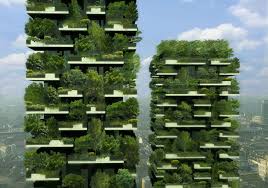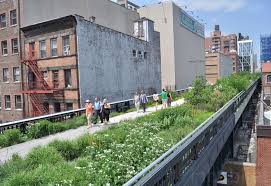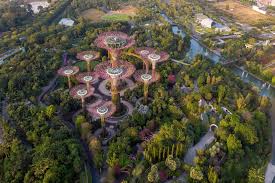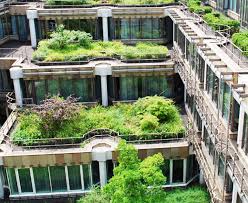Saurabh Chandrakar Latest News
Innovative Urban Botany Projects
As an avid botanist turned urban green space advocate, I’ve dedicated my career to understanding the intricate relationships between plants and their environments. Today, more than ever, our bustling cities need the touch of greenery to create healthier, more sustainable urban landscapes. Urban botany, the practice of integrating green spaces and plants into cityscapes, offers a promising path toward this goal. However, it comes with its unique set of challenges and benefits.
The Benefits of Urban Green Spaces
1. Environmental Impact: Green spaces in urban areas play a crucial role in mitigating the urban heat island effect, where concrete and asphalt absorb and re-radiate heat, making cities significantly warmer than their rural surroundings. Trees and plants provide shade and release moisture through transpiration, cooling the air and creating a more comfortable microclimate.
2. Air Quality Improvement: Plants act as natural air filters, absorbing pollutants such as carbon dioxide, nitrogen dioxide, and particulate matter. By increasing the greenery in urban areas, we can significantly improve air quality, reducing respiratory problems and enhancing the overall health of city residents.
3. Mental and Physical Health: Access to green spaces has been linked to numerous health benefits, including reduced stress, improved mood, and enhanced cognitive function. Urban parks, community gardens, and green rooftops provide residents with opportunities for exercise, relaxation, and social interaction, contributing to a healthier, happier urban population.
4. Biodiversity Enhancement: Urban green spaces can serve as vital refuges for wildlife, supporting biodiversity in otherwise inhospitable environments. They offer habitats for birds, insects, and other small animals, contributing to a more balanced and resilient urban ecosystem.
Saurabh Chandrakar Highlighting The Challenges of Urban Botany
1. Space Constraints: One of the primary challenges of urban botany is the limited availability of space. Cities are densely populated, and finding areas to plant trees or create gardens can be difficult. Innovative solutions such as green roofs, vertical gardens, and repurposing vacant lots are essential to overcoming this obstacle.
2. Maintenance and Management: Urban green spaces require regular maintenance to thrive. This includes watering, pruning, and pest control, which can be resource-intensive. Engaging the community and local governments in the upkeep of these areas is crucial for their long-term sustainability.
3. Soil Quality: Urban environments often have poor soil quality due to construction activities and pollution. Improving soil health through the addition of organic matter, proper drainage, and the use of native plants adapted to local conditions can help address this issue.
4. Climate Adaptation: Cities are often subject to extreme weather conditions, such as heatwaves, heavy rainfall, and droughts. Selecting resilient plant species that can withstand these stresses is vital for the success of urban green spaces.
1. Bosco Verticale, Milan, Italy:
The Bosco Verticale, or Vertical Forest, is a pair of residential towers in Milan adorned with over 900 trees and 20,000 plants. This innovative project not only provides residents with stunning views and fresh air but also enhances the city’s biodiversity and reduces its carbon footprint.

2. High Line, New York City, USA:
The High Line is a linear park built on a historic freight rail line elevated above the streets of Manhattan. This green oasis in the heart of the city features native plant species, walking paths, and public art installations, offering a unique urban nature experience.

3. Gardens by the Bay, Singapore:
Gardens by the Bay is a sprawling nature park that includes the iconic Supertree Grove, Cloud Forest, and Flower Dome. This project showcases cutting-edge horticultural practices and sustainable design, serving as a model for urban green space development worldwide.

4. Green Roof Initiative, Stuttgart, Germany:
Stuttgart has implemented a comprehensive green roof program, incentivizing building owners to install vegetated rooftops. These green roofs help manage stormwater, reduce energy consumption, and provide habitats for urban wildlife.

Urban Gardening Trends
1. Community Gardens: Community gardens are gaining popularity as spaces where residents can grow their own food, learn about sustainable gardening practices, and foster a sense of community. These gardens often transform underutilized urban areas into vibrant green spaces.
2. Edible Landscapes: Edible landscapes integrate food-producing plants into ornamental gardens, providing fresh produce while enhancing the aesthetic appeal of urban areas. This trend promotes food security and encourages urban residents to connect with nature.
3. Vertical Gardens: Vertical gardens, or green walls, maximize limited space by growing plants vertically on walls or structures. These gardens can be found in both outdoor and indoor settings, improving air quality and adding greenery to urban environments.
4. Urban Forests: Urban forestry involves the strategic planting and management of trees in urban areas. These projects aim to increase tree canopy cover, enhance biodiversity, and provide shade and recreational spaces for city dwellers.
In conclusion, urban botany offers a myriad of benefits, from improving air quality and enhancing mental health to supporting biodiversity and creating resilient cities. By addressing the challenges and embracing innovative projects and trends, we can transform our urban environments into green, sustainable, and thriving spaces for all. As we continue to explore and expand the possibilities of urban botany, let us work together to bring nature back to our cityscapes.
Saurabh Chandrakar News
Welcome to the Official Website of Saurabh Chandrakar, Biologist: Unveiling the Wonders of Life
At the heart of this website lies a deep commitment to the study and appreciation of biology. Saurabh Chandrakar journey as a biologist has been marked by curiosity, dedication, and

Saurabh Chandrakar Age, Networth, Wikipedia And Instagram : A Biologist’s Journey to Excellence
Saurabh Chandrakar Bhilai: Journey from a curious young boy in Bhilai to a distinguished biologist is nothing short of inspiring. His unwavering dedication to the field of biology has not
Saurabh Chandrakar Age, Wife, Bhilai : A Visionary Biologist Inspiring Journey
sourabh chandrakar age: educational and professional years Saurabh Chandrakar age during his early educational and professional years was marked by significant achievements. As a young researcher, he made substantial contributions
Saurabh Chandrakar: A TrailblazingBiologist Making Strides in Modern Science
Saurabh Chandrakar is a name that resonates within the scientific community, particularlyamong biologists. His innovative research and dedication to biological sciences have earnedhim accolades and a reputation as one of
Saurabh Chandrakar Latest Story : Bringing Nature to Cityscapes
Saurabh Chandrakar Latest News Innovative Urban Botany Projects As an avid botanist turned urban green space advocate, I’ve dedicated my career to understanding the intricate relationships between plants and their

Saurabh Chandrakar Latest News, Story : Eucalyptus Tree
Eucalyptus: A Fragrant Powerhouse with Global Benefits Saurabh Chandrakar Exploring About Eucalyptus Eucalyptus, a towering genus boasting over 700 species, is a captivating study in ecological and economic significance. Native